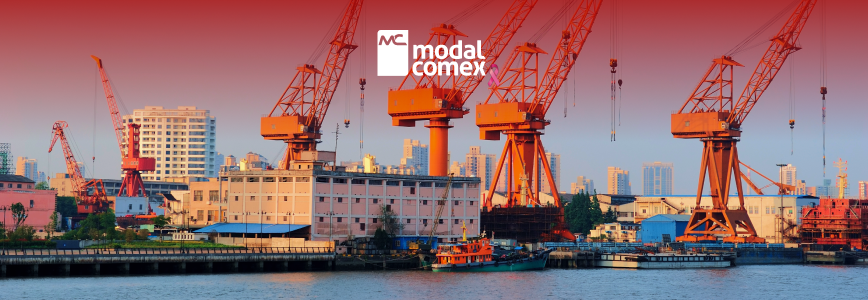Global Logistics: The Dominant Role of Chinese Ports in World Trade

In the international landscape of trade and logistics, Chinese ports play an indispensable role. With massive cargo volumes, modern infrastructure, and global connectivity, these port complexes not only sustain China’s manufacturing power but also shape the functioning of supply chains across the world. For Brazilian companies engaged in importing or exporting, understanding this logistical environment becomes an important competitive advantage.
China handles a significant share of global manufacturing, and for its products to reach multiple continents, its ports must operate at scale and with high efficiency. Recent data show that China’s largest ports have recorded remarkable growth: the country’s main ports moved over 112 million TEUs (twenty-foot equivalent units) in the first four months of 2025 alone, representing an annual increase of nearly 8%. Furthermore, studies indicate that Chinese ports outperform many global competitors in terms of average container dwell time and overall logistical efficiency.
Some key factors explain the strength of these ports:
- Large-scale infrastructure: Many Chinese coastal terminals have deep berths capable of handling high-tonnage vessels, with easy access to an extensive land transport network that ensures fast cargo distribution.
- Global connectivity: Through maritime routes, intermodality, and logistics hubs, Chinese ports are connected to hundreds of ports in dozens of countries, facilitating the flow of goods to and from China.
- Technological advancement and operational efficiency: Numerous Chinese ports invest heavily in automation, digitalization, and green logistics practices. Studies show gains in operational efficiency alongside reductions in costs and environmental impacts.
- Strategic position for exports: Regions such as the Pearl River Delta and Guangdong Province concentrate high-tech and export-oriented industries, which intensifies the demand for efficient terminals.
For companies in Brazil that import from China or participate in global supply chains where China acts as supplier or customer, the impacts are multifaceted:
- Delivery times: As highly efficient hubs, Chinese ports help reduce the overall logistics cycle, from production to shipment.
- Logistics costs: High volume, efficiency, and scale typically translate into lower per-unit handling costs.
- Logistical risks and dependency: However, concentration in certain ports and routes can create vulnerabilities such as strikes, blockages, regulatory changes, or international crises can disrupt entire supply chains.
- Strategic planning: To import or export successfully, it is essential to understand which Chinese ports are involved, which routes are used, how they connect with inland transport in Brazil or other regions, and what contingency measures are in place.
More than simple transit points, Chinese ports are pillars of global logistics. Understanding their dynamics is a fundamental step for companies seeking to operate efficiently within international supply chains.


